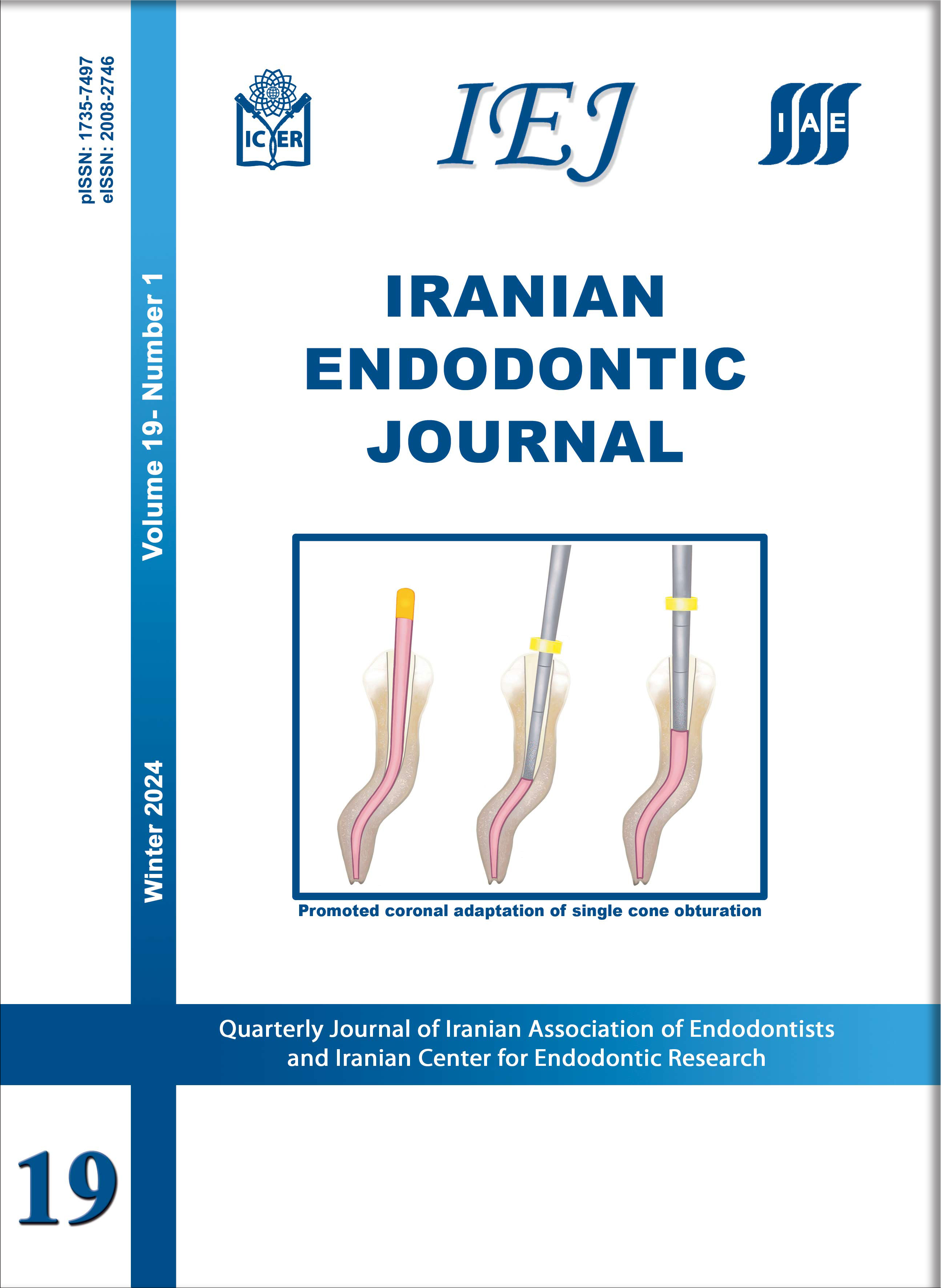Comparing the Efficacy of Premedication with Ibuprofen in Combination with an Inferior Alveolar Nerve Block and Primary Buccal Infiltration in Mandibular Molars with Irreversible Pulpitis: A Triple-blinded Randomized Clinical Trial
Iranian Endodontic Journal,
Vol. 17 No. 4 (2022),
26 October 2022,
Page 165-171
https://doi.org/10.22037/iej.v17i4.37438
Introduction: This study aimed to determine the success rate of the combination of buccal infiltration (BI) and inferior alveolar nerve block (IANB) injections in irreversible pulpitis in mandibular molars after premedication with ibuprofen. Materials and Methods: From 132 patients participated in the study, 120 patients were included. One hour before root canal treatment, patients with mandibular molars with symptomatic irreversible pulpitis received either a 600 mg ibuprofen capsule or a placebo. All patients received 2% lidocaine with 1:80000 epinephrine and 4% articaine with 1:100000 epinephrine for IANB and BI, respectively. Patients’ pain was evaluated using the Heft-Parker visual analog scale during the preparation of access cavity, exposure of pulp, and instrumentation of root canal. The success of anesthesia was defined as the absence of pain or mild pain. The Chi-square and t-test were employed for data analysis. Results: The difference between patient age and gender in the two groups was not significant (P>0.05). The anesthesia success rate was 85% in the premedicated and 70% in the placebo group, with statistically significant results (P=0.049). Conclusion: Based on this triple-blinded randomized clincal study, mandibular molars with irreversible pulpitis were not thoroughly anesthetized by a combination of IANB+BI after premedication with ibuprofen (600 mg), even though anesthesia success was improved significantly by ibuprofen premedication.




